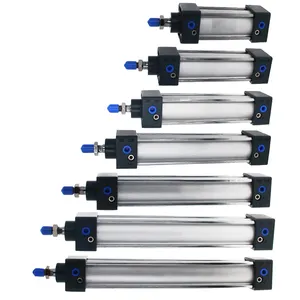Introduction to Protection Hydraulics
Protection hydraulics are crucial systems designed to safeguard hydraulic machinery and equipment from damage, wear, and environmental factors that can detrimentally affect performance. These systems play an essential role in various industrial applications, ensuring longevity and efficiency. By embracing advanced technology and innovative designs, protection hydraulics significantly contribute to the reliability of hydraulic operations across diverse sectors.
Types of Protection Hydraulics
Protection hydraulics come in various forms, each offering unique benefits depending on the specific requirements of the application. Understanding the different types can assist in selecting the most suitable option for your hydraulic systems:
- Hydraulic Filters: Designed to remove contaminants from hydraulic fluid, ensuring clean operation.
- Pressure Relief Valves: These components prevent excessive pressure accumulation, protecting the system from potential damage.
- Seals and Gaskets: Essential for preventing fluid leaks, thereby maintaining system integrity under pressure.
- Anti-wear Compounds: Additives added to hydraulic fluids that enhance lubrication and reduce friction, prolonging the lifespan of components.
Applications of Protection Hydraulics
The applications of protection hydraulics span across a variety of industries, underscoring their versatility and critical nature. Here are some key areas where protection hydraulics are indispensable:
- Construction and Mining: Heavy machinery employed in these industries relies heavily on protection hydraulics to ensure safe and efficient operation in challenging environments.
- Aerospace: Aircraft hydraulic systems require stringent protection measures due to the high stakes involved in aviation safety.
- Agriculture: Agricultural machines utilize protection hydraulics to shield complex machinery from debris and adverse weather conditions.
- Manufacturing: Hydraulic presses and robotics in manufacturing facilities benefit from protection hydraulics to enhance durability and reduce downtime.
Function and Features of Protection Hydraulics
Understanding the core functions and features of protection hydraulics is essential for anyone involved in hydraulic system management. Here are the primary functions and noteworthy features:
- Efficient Filtration: Advanced filtration systems are designed to capture even the smallest particles, thereby preventing equipment wear and system failures.
- Pressure Regulation: Pressure relief mechanisms ensure that system pressure remains within specified limits, enhancing safety and operational efficiency.
- Leak Prevention: Robust seals and gaskets are pivotal in minimizing leakages, which could lead to performance dips and environmental hazards.
- Adaptive Solutions: Many modern protection hydraulic systems can be customized or adjusted according to specific operational needs, maximizing efficiency.
Advantages of Using Protection Hydraulics
Investing in protection hydraulics offers numerous advantages that contribute to improved operational efficiency and safety:
- Increased Equipment Lifespan: By preventing contaminants and minimizing wear and tear, protection hydraulics significantly extend the life of hydraulic systems.
- Enhanced Safety: Protective measures greatly reduce the risk of accidents and system failures, ensuring a safer working environment.
- Cost Efficiency: Regular use of protection hydraulics can lead to lower maintenance costs and reduced downtime, providing substantial financial savings.
- Operational Reliability: These systems afford a higher degree of reliability in critical operations, boosting productivity and output quality.














































